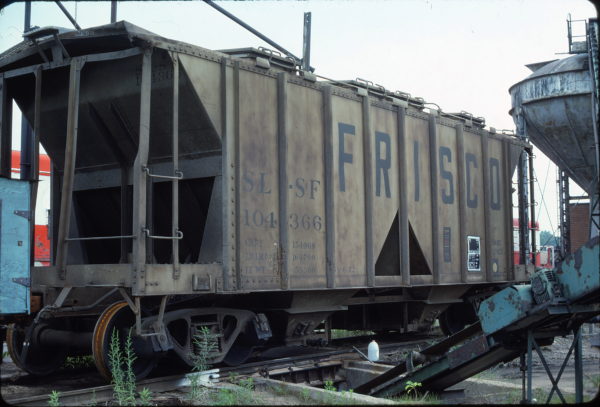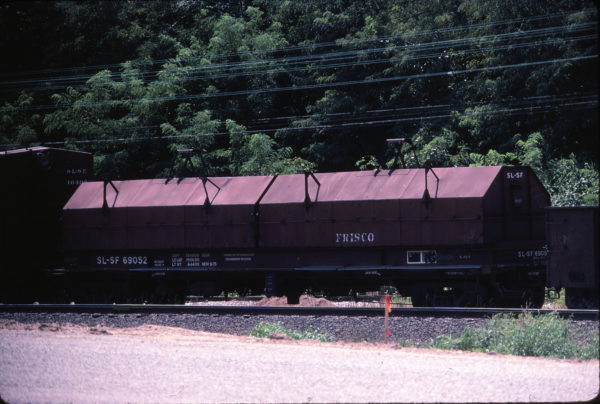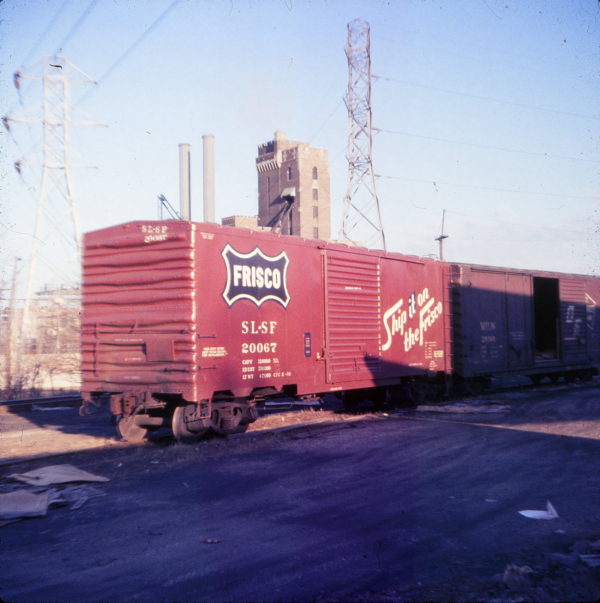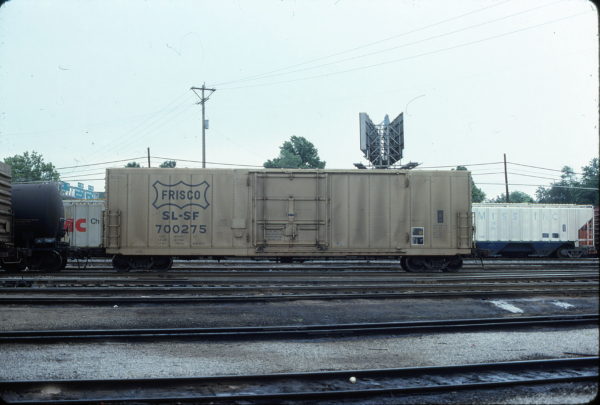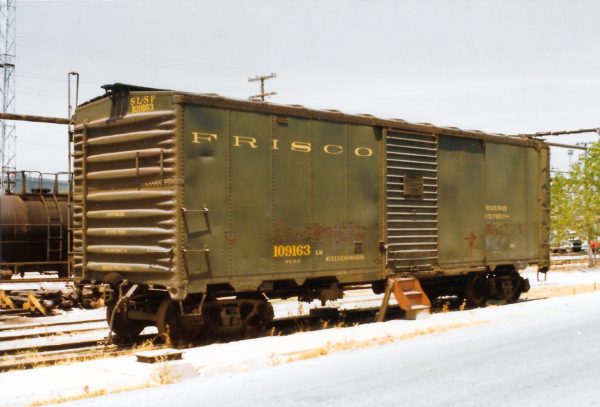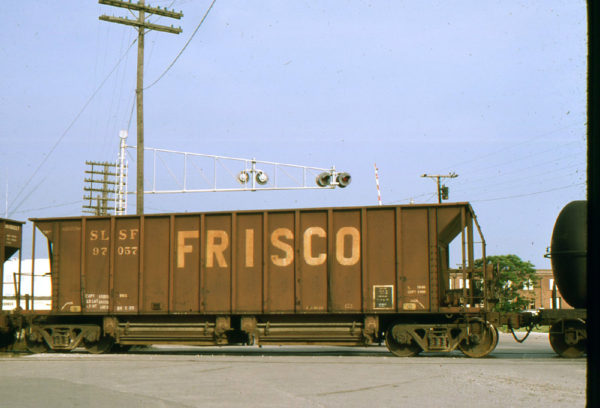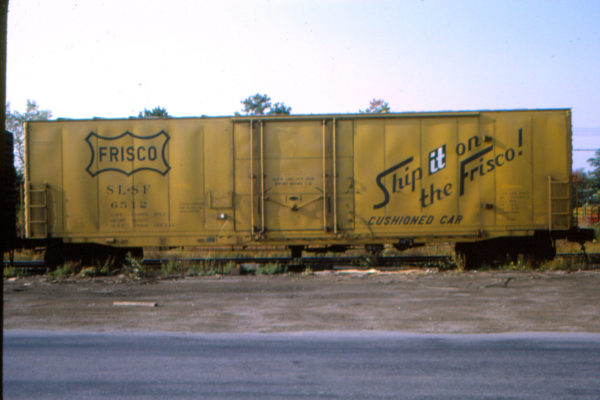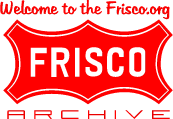Category Archives: Rolling Stock
Coil Car 69052
Boxcar 20067
Boxcar 700275
465 Class Express Boxcar 109163
Express Boxcar 453
Hopper 97057
Cattle Car 47864
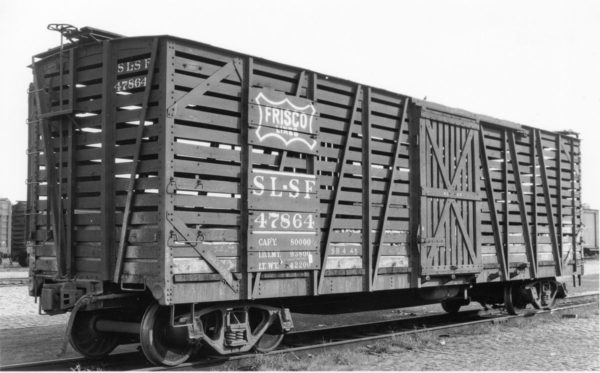
Cattle car 47864 (date and location unknown).
Built during 1923, this is one of 300 similar 40 foot 5 inch inside length cars in the series 47700-47999.
This livestock, or stock car for short, was constructed by the Mount Vernon Car Company. The car builder was a frequent advertiser in the company’s Frisco Employees’ Magazine. A photograph of one of these cars was a prominent feature in their advertisements.
This group of cars as originally built was assigned Association of American Railroads (AAR) classification “SM”. The “S” class denotes cars for the transportation of livestock on the hoof. The “M” denotes cars with slated sides and side doors, with a single deck. Starting around 1940, at least 49 cars were modified into double deck cars for hauling smaller animals including pigs and sheep. As a result, these were reassigned into the AAR classification “SF”. This denotes stock cars equipped with a fixed double deck.
The cars were built around a fishbelly shaped longitudinal center sill underframe. Cross bears supported inward facing C-shaped side sills. To this backbone was attached a steel framework of Z-shaped angle irons. Open slat wood sides and ends were then attached to this steel framework. On top they incorporated relatively rare Samson brand radial roofs.
As seen in this view, the cars featured a vertical staff hand brake. On top of the staff rod the brake wheel attached in a horizontal position. This arrangement was retained throughout their service lives. The cars were originally built with KC-style air brake systems. These were modernized and replaced with newer AB-style air brake valve systems starting in the 1940s.
Large surface letter boards were provided for the corporate herald, car reporting marks, numbers and weight data. From the end these were attached to the second bay framework, to the left of the door. Other dimensional information and data was applied directly to the individual wood slats.
The cars, including the underframe, were painted freight car red. Reporting marks, car numbers, lettering and coonskin heralds were painted white. Car loading doors were painted yellow. Over the years a number of cars had repaired or replacement doors painted the carbody color. In this photograph routing chalk marks can be seen on the car sides.
Photos show the heralds with and without a black background. The heralds also underwent transitions. As delivered the herald had the stacked lettering FRISCO LINES. After the corporate herald change in 1947, the company dropped the word LINES. From that point heralds were seen with LINES simply painted out, leaving FRISCO offset to the top or if repainted featured the new herald with centered FRISCO.
Typical service was moving animals between grazing lands, feed lots and slaughter houses. In addition to hauling livestock the cars also were used for other commodities. Shipments included watermelons, coke used in steel making, hay and similar feed stock.
This photograph was taken in the mid to late 1940s. This is established by the last reweigh date, April 1945, but before the FRISCO LINES herald was modified.
Special thanks to Mark Davidson.
